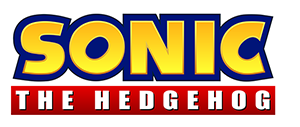Sonic the Hedgehog is a media franchise created by Yuji Naka, Naoto Ohshima, and Hirokazu Yasuhara for Sega. The series centers around Sonic, a blue anthropomorphic hedgehog, who fights the villainous Doctor Eggman. Primarily known for its platformer video games developed by Sonic Team, the franchise also encompasses various spin-offs spanning racing, fighting, and sports genres. Beyond video games, Sonic the Hedgehog's popularity extends to printed media, animations, films, and a wide range of merchandise, solidifying its status as a major entertainment property.
1984: Appearance of Flicky in Sonic Games
Flicky, the blue bird from Sega's 1984 arcade game Flicky, appears in several Sonic games, particularly 3D Blast.
December 1985: Nintendo no longer leads console market
Before December 1985 Nintendo had been leading the console market.
1987: Inspiration from Michael Jackson's Bad album
In 1987, the red and white shoes of the character Sonic were inspired by the cover of Michael Jackson's album Bad.
1990: Release of Super Mario World
In 1990, Nintendo released Super Mario World, which the original Sonic the Hedgehog was later touted as a faster, cooler alternative to.
November 1991: STI begins work on Sonic the Hedgehog 2
In November 1991, Sega Technical Institute (STI) began work on Sonic the Hedgehog 2.
December 1991: Genesis outsells Super Nintendo
In December 1991, due to its Genesis bundling, Sonic the Hedgehog contributed greatly to the console's popularity in North America and the Genesis outsold its chief competitor, the Super Nintendo Entertainment System, by a two-to-one ratio.
December 1991: Release of 8-bit Sonic version
In December 1991, the first 8-bit version of the original Sonic was developed by Ancient to promote the Game Gear.
1991: Release of first Sonic game
In 1991, Naka, Ohshima, and Yasuhara released the first Sonic game for the Sega Genesis. The game's purpose was to provide Sega with a mascot to compete with Nintendo's Mario.

1991: Sonic's first appearance in Rad Mobile and Genesis pack-in
In 1991, Sonic's first appearance came in Sega AM3's racing game Rad Mobile five months before the release of Sonic the Hedgehog. Also in 1991, Kalinske arranged to place Sonic the Hedgehog as the pack-in game with the Genesis, which greatly increased its popularity.

1991: Gameplay of Sonic the Hedgehog originated with a tech demo created by Naka
In 1991, the gameplay of Sonic the Hedgehog originated with a tech demo created by Naka, who had developed an algorithm that allowed a sprite to move smoothly on a curve by determining its position with a dot matrix.
January 1992: Sega holds 65 percent of the market
In January 1992 Sega held 65 percent of the market for 16-bit consoles.
1992: Sonic more recognizable than Mickey Mouse
By 1992, Sonic was more recognizable to children ages 6 to 11 than Disney's Mickey Mouse.
1992: Release of Sonic the Hedgehog 2
In 1992, Sonic the Hedgehog 2 was released and was a major success.
1992: Sonic the Hedgehog 2 Sets Sales Records
In 1992, upon its release, Sonic the Hedgehog 2 set records for being the fastest-selling game, selling out 3.2 million copies worldwide within two weeks. Also in 1992, Sonic the Hedgehog 2 grossed $450 million ($1,010 million adjusted for inflation), becoming the year's highest-grossing home entertainment product.
1993: Sonic the Comic Launch
In 1993, Fleetway Publications launched Sonic the Comic, a British comic series that ran for 223 issues. The comic featured original stories, news, and reviews aimed at children, with contributions from Richard Elson, Nigel Kitching, Andy Diggle, and Nigel Dobbyn.
1993: Release of Sonic Spinball
In 1993, Sega Technical Institute developed the spin-off game Sonic Spinball.
1993: Sonic appears in Macy's Thanksgiving Day Parade
In 1993, Sonic became the first video game character to have a balloon in the Macy's Thanksgiving Day Parade.
1993: Release of Dr. Robotnik's Mean Bean Machine and SegaSonic the Hedgehog
In 1993, Sonic games released included Dr. Robotnik's Mean Bean Machine, a Western localization of Puyo Puyo, and SegaSonic the Hedgehog, an arcade game featuring isometric gameplay.
1993: Sonic Tied with Mario as Highest-Earning Entertainment Character
In 1993, Sonic tied with Mario as the highest-earning entertainment character of the year, each generating $500 million ($1,090 million adjusted for inflation) in digital game sales.
1993: Release of Aero the Acro-Bat and James Pond 3
In 1993, following Sonic's success, similar platformers starring animal mascots were released, including Aero the Acro-Bat and James Pond 3.
February 1994: Release of Sonic the Hedgehog 3
In February 1994, the first half of the project that was originally Sonic the Hedgehog 3 was released. The other half was Sonic & Knuckles, released a few months later.
1994: Sega and McDonald's Sonic 3 Happy Meal Promotion
In 1994, Sega and McDonald's collaborated for a Sonic-themed Happy Meal promotion for Sonic the Hedgehog 3. This promotion was the first video game franchise promoted in McDonald's and sold over 50 million Sonic Happy Meal toys worldwide.
1994: Introduction of Characters Mighty the Armadillo and Fang the Sniper
In 1994, Sonic Triple Trouble introduced characters Fang the Sniper, Mighty the Armadillo and Ray the Flying Squirrel faded into obscurity, but later became prominent characters again in Sonic Mania and Superstars.
1994: Release of Earthworm Jim and Zero the Kamikaze Squirrel
In 1994, following Sonic's success, similar platformers starring animal mascots were released, including Earthworm Jim and Zero the Kamikaze Squirrel.
1995: Release of Knuckles' Chaotix
In 1995, Knuckles' Chaotix, a spin-off for the Genesis's 32X add-on starring Knuckles, was released.
1995: Gex release
In 1995, the developers of the game Gex cited Sonic as a major inspiration.
1996: Sonic Ranks Among Bestselling Franchises in the UK
Between 1996 and 2012, Sonic was the sixth-bestselling game franchise in the United Kingdom.
1996: Million Pairs of Sonic Trousers Sold
By 1996, a million pairs of Sonic trousers had been sold.
1996: Sonic Games Declared Zeitgeist of the 16-bit Era
In 1996, Next Generation described Sonic 2, Sonic CD, Sonic 3, and Sonic & Knuckles as the "zeitgeist of the 16-bit era", praising them for building on the first game's formula.
1996: Formation of Sonic Team and release of Nights into Dreams and Sonic 3D Blast
In 1996, Sonic Team was officially formed as a brand and began work on Nights into Dreams for the Sega Saturn console. Also in 1996, Sega released Sonic 3D Blast for the Genesis.
1996: Cancellation of Sonic X-treme and port of Sonic 3D Blast
In 1996, Sonic X-treme, a 3D Sonic game for the Saturn, was canceled. Due to its cancellation, Sega ported Sonic 3D Blast to the Saturn with updated graphics.
1996: Yu Suzuki's Joke About Creating New Characters
In 1996, Yu Suzuki, the producer of Sonic the Fighters, joked that anyone who makes a Sonic game has the duty to create new characters.
1996: Crash Bandicoot release
In 1996, the developers of Crash Bandicoot cited Sonic as a major inspiration.
1997: Sonic the Hedgehog Earns Over $400 Million
By 1997, the original Sonic the Hedgehog had earned over $400 million ($920 million adjusted for inflation).
1997: Announcement of Project Sonic and releases of Sonic Jam and Sonic R
In 1997, Sega announced "Project Sonic", a promotional campaign. The first Project Sonic release was Sonic Jam. Sonic Team and Traveller's Tales also collaborated on Sonic R, a 3D racing game.
1998: Release of Sonic Adventure
In 1998, Sonic Adventure, directed by Iizuka, was released and was one of the first sixth-generation video games.
1999: Sonic Team USA established
In 1999, Iizuka and other Sonic Team members relocated to San Francisco and established Sonic Team USA.
1999: Collaboration with SNK on Sonic the Hedgehog Pocket Adventure
In 1999, Sega collaborated with SNK to produce Sonic the Hedgehog Pocket Adventure, an adaptation of Sonic 2 for the Neo Geo Pocket Color.
2000: Sonic Adventure Adaptation in Sonic the Comic
In 2000, Sonic the Comic featured its final story arc, a loose adaptation of Sonic Adventure.
2000: Release of Sonic Shuffle
In 2000, the party game Sonic Shuffle was released as a spin-off in the Sonic franchise.
January 2001: Sega discontinues Dreamcast
In January 2001, Sega announced it was discontinuing the Dreamcast to become a third-party developer.
2001: Release of Sonic Advance
In 2001, Dimps developed Sonic Advance, an original 2D Sonic game for Nintendo's Game Boy Advance (GBA). It marked the first original Sonic game on a Nintendo console after the Sega-Nintendo rivalry.
2001: Sega shifts to third-party development
In 2001, Sega exited the console market and shifted to third-party development, continuing the Sonic series on Nintendo, Xbox, and PlayStation systems.
2002: Release of Sonic Advance 2
In 2002, Dimps continued the Sonic Advance series by developing Sonic Advance 2 for Nintendo's Game Boy Advance.
2002: Cancellation of Sonic the Comic
In 2002, Sonic the Comic, published by Fleetway Publications, was cancelled after running for 223 issues.
2003: Release of Sonic Heroes and port of Sonic Adventure
In 2003, Sonic Team USA developed the multi-platform Sonic game, Sonic Heroes. Sonic Team also ported Sonic Adventure with additional content to the GameCube in 2003.
2003: Release of Sonic Pinball Party and Sonic Battle
In 2003, two spin-off games were released: the pinball game Sonic Pinball Party and the fighting game Sonic Battle.
2004: Sonic Franchise Merchandise Sales Exceed $1 Billion and Sonic Heroes Happy Meal Promotion
By 2004, the Sonic the Hedgehog franchise had generated more than $1 billion in licensed merchandise sales. In 2004, Sega and McDonald's had another Happy Meal Promotion for Sonic Heroes.
2004: Release of Sonic Advance 3
In 2004, Dimps released Sonic Advance 3 for the Nintendo's Game Boy Advance, continuing their work on original 2D Sonic games.
2004: Sonic Adventure ported to Windows
In 2004, Sonic Team ported Sonic Adventure with additional content to Windows.
2005: Release of Sonic Rush and Sonic Gems Collection
In 2005, Dimps developed Sonic Rush for the Nintendo DS, utilizing a 2.5D perspective. Also in 2005, Sonic Team released the Sonic Gems Collection, a compilation aimed at introducing older games to new fans.
2005: Release of Shadow the Hedgehog
In 2005, Sega Studios USA released Shadow the Hedgehog, a spin-off game starring Shadow. It aimed for a mature audience and introduced third-person shooting and nonlinear gameplay. The game sold at least 1.59 million copies despite being panned by critics.
2005: Sonic Team Begins Working on Sonic Unleashed
In 2005, Sonic Team began working on Sonic Unleashed, conceived as a sequel to Adventure 2 but changed to a standalone entry with innovations.
2005: Sonic inducted on the Walk of Game
In 2005, Sonic was one of the four characters inducted on the Walk of Game, alongside Mario, Link, and Master Chief.
2006: Release of Sonic Rivals
In 2006, Backbone Entertainment developed Sonic Rivals, a Sonic game exclusive to the PlayStation Portable.
2006: Release of poorly reviewed Sonic game
In 2006, a Sonic game was released that received poorer reviews, although the franchise remains influential in the video game industry.
2006: Release of Sonic Riders and Sonic the Hedgehog (Sonic '06)
In 2006, to commemorate the franchise's 15th anniversary, Sonic Team released Sonic Riders, a GBA port of the original Sonic, and Sonic the Hedgehog (Sonic '06), a reboot intended for seventh-generation consoles. Sonic '06 was critically panned and is considered the worst game in the series.
2006: Criticism of the 2006 Sonic the Hedgehog Game
In the wake of the 2006 Sonic the Hedgehog game, Brett Elston of GamesRadar+ said that Sonic Rush Adventure had "managed to keep the [series'] spirit alive".
2006: Poor reception of Sonic the Hedgehog
Many fans have continued to support the Sonic series in spite of poorly received games like the 2006 Sonic the Hedgehog.
2007: Releases of Sonic Rivals 2, Sonic and the Secret Rings, and Sonic Rush Adventure
In 2007, Sonic Rivals 2, Sonic and the Secret Rings and Sonic Rush Adventure were released. Backbone Entertainment developed Sonic Rivals 2 for the PlayStation Portable, Sonic and the Secret Rings was released for the Wii, and Dimps returned to the series with Sonic Rush Adventure.
2008: Release of Sonic Unleashed
In 2008, Sonic Team released Sonic Unleashed. They sought to combine the best aspects of 2D and 3D Sonic games.
2008: Releases of Zero Gravity and Sonic Chronicles: The Dark Brotherhood
In 2008, the Sonic Riders sequel, Zero Gravity, was developed for the Wii and PlayStation 2. BioWare also developed the first Sonic RPG, Sonic Chronicles: The Dark Brotherhood, for the DS.
2008: First Summer of Sonic fan convention
Summer of Sonic, an annual fan convention dedicated to the Sonic series and hosted in the United Kingdom, was founded by Svend Joscelyne and Adam Tuff and first held in 2008.
2009: Release of Sonic and the Black Knight
In 2009, Sega released Sonic and the Black Knight for the Wii, set in the world of King Arthur, as part of the Sonic Storybook sub-series.
October 2010: Sega Delists Sonic Games and Release of Sonic the Hedgehog 4: Episode I
In October 2010, Sega delisted Sonic games with average or below-average scores on Metacritic, while Sonic the Hedgehog 4: Episode I was released to general praise.
2010: Iizuka Becomes Head of Sonic Team
After Nishiyama's promotion in 2010, Iizuka was installed as the head of Sonic Team and became the Sonic producer.
2010: "Sanic hegehog" meme originated
In 2010, "Sanic hegehog", a crude Sonic drawn in Microsoft Paint, originated and became an internet meme.
2010: Release of Sonic the Hedgehog 4: Episode I and Sonic Colors
In 2010, Sonic the Hedgehog 4 began with Episode I, co-developed by Sonic Team and Dimps. Also, Sega released Sonic Colors for the Wii and DS.
2010: Takashi Iizuka becomes producer
In 2010, Takashi Iizuka became the series' producer for Sonic the Hedgehog.
2011: Sonic Cumulative Sales Reach 89 Million Copies
By March 2011, the cumulative sales of the Sonic the Hedgehog franchise reached 89 million copies. The Mario & Sonic series alone sold over 19 million copies as of 2011.
2011: Sonic Generations Hailed as a Return to Form
In 2011, Sonic Generations was hailed as a return to form for the Sonic series, though it was considered an "admission of defeat" for depicting the 2D and 3D incarnations of Sonic together.
2011: Release of Sonic Generations
In 2011, for the series' 20th anniversary, Sega released Sonic Generations for the Xbox 360, PlayStation 3, and Windows; a separate version was developed by Dimps for the Nintendo 3DS.
2011: Whitehead Develops Sonic CD Version for Modern Consoles
In 2011, programmer Christian "Taxman" Whitehead developed a version of Sonic CD for modern consoles.
2012: Sonic Among Bestselling Franchises in the UK
Between 1996 and 2012, Sonic was the sixth-bestselling game franchise in the United Kingdom.
2012: Sonic appears in Wreck-It Ralph
In 2012, Sonic and Eggman appear as minor characters in the Walt Disney Animation Studios film Wreck-It Ralph.
2012: Release of Sonic the Hedgehog 4: Episode II
In 2012, Sonic the Hedgehog 4 continued with Episode II, a side-scrolling episodic sequel to Sonic & Knuckles co-developed by Sonic Team and Dimps.
2012: Sega and RHM Solutions Open Online Sonic Store
In January 2012, Sega and RHM Solutions opened an online Sonic store.
May 2013: Nintendo Announces Collaboration with Sega
In May 2013, Nintendo announced its collaboration with Sega to produce Sonic games for its Wii U and 3DS platforms.
2013: Release of Sonic the Hedgehog Remakes and Sonic Dash
In 2013, Christian "Taxman" Whitehead and Simon "Stealth" Thomley released remakes of the original Sonic the Hedgehog and Sonic the Hedgehog 2 for iOS and Android. Also in 2013, Hardlight developed Sonic Dash, an endless runner.
2013: Release of Sonic Lost World
In 2013, Sonic Lost World was released to mixed reviews, with some critics considering it a fresh take on the Sonic formula and others a poorly designed mess.
2013: Development of Sonic the Hedgehog Film Begins
In 2013, development of a live-action animated Sonic the Hedgehog film began when Sony Pictures Entertainment acquired the film rights.
2013: Sonic After the Sequel release
In 2013, the notable Sonic fangame Sonic After the Sequel was released, set between the events of Sonic the Hedgehog 2 and 3.
June 2014: Plans Announced for Sonic the Hedgehog Film
In June 2014, Sony Pictures Entertainment announced plans to produce Sonic the Hedgehog as a joint venture with Sega's Marza Animation Planet.
2014: Sonic Game Sales Grossed Over $5 Billion
By 2014, the Sonic the Hedgehog games had grossed over $5 billion in sales.
2014: Release of Mario & Sonic at the Sochi 2014 Olympic Winter Games and Sonic Boom Games
In 2014, Mario & Sonic at the Sochi 2014 Olympic Winter Games was released for the Wii U. Also in 2014, Sonic Boom: Rise of Lyric for the Wii U and Sonic Boom: Shattered Crystal for the 3DS were released, based on the Sonic Boom television series.
February 2015: Low Sales of Sonic Boom Games and Acknowledgment of Quality Prioritization Issues
By February 2015, the two Sonic Boom games had sold only 490,000 copies combined, making them the worst-selling Sonic games. Also in 2015, Sega acknowledged that the company had "partially betrayed" the trust of the longtime fans and hoped to focus on quality over quantity.
June 2015: Aaron Webber Takes Charge of Sonic's Twitter Account
In June 2015, Aaron Webber took charge of the Sonic the Hedgehog series' Twitter account (@sonic_hedgehog), which became known for internet memes and self-deprecating comments.
2015: Release of Sonic Runners
In 2015, Sonic Team released Sonic Runners, its first game for mobile devices.
2015: Sonic Dreams Collection release
In 2015, the notable Sonic fangame Sonic Dreams Collection was released, satirizing the series' fandom.
2015: Iizuka Acknowledges Disappointing Contemporary Sonic Games
In a 2015 interview with Polygon, Iizuka acknowledged that contemporary Sonic games had been disappointing and that the Sonic Team logo would stand as a "mark of quality" moving forward.
July 2016: Sega Announces Sonic Mania and Sonic Forces at San Diego Comic-Con
In July 2016, Sega announced two Sonic games at San Diego Comic-Con to coincide with the series' 25th anniversary: Sonic Mania and Sonic Forces.
2016: Sonic Cumulative Sales Reach Over 140 Million Copies
By 2016, the cumulative sales of the Sonic the Hedgehog franchise had reached over 140 million copies.
2016: Release of Sonic Boom: Fire & Ice
In 2016, Sonic Boom: Fire & Ice, a Shattered Crystal sequel, was released.
2016: Announcement of Sonic Mania
In 2016, the announcement of Sonic Mania brought further hope for the Sonic franchise's future, with journalists describing it as a true continuation of the Genesis games.
August 2017: Release of Sonic Mania
In August 2017, Sonic Mania was released and became the best-reviewed Sonic game in 15 years.
October 2017: Paramount Acquires Rights to Sonic the Hedgehog Film
In October 2017, Paramount Pictures acquired the rights to the Sonic the Hedgehog film after Sony put the film into turnaround.
2017: Release of Sonic Runners Adventure
In 2017, Gameloft released a sequel to Sonic Runners, Sonic Runners Adventure, to generally positive reviews.
2017: Release of Sonic Mania and Sonic Forces
In 2017, Sonic Mania and Sonic Forces were released for multiple platforms. Sonic Mania received the best reviews for a Sonic game in 15 years, while Sonic Forces received mixed reviews.
2017: Review of Sonic Lost World inspires Ugandan Knuckles
In 2017, a review of Sonic Lost World by YouTube user Gregzilla, as well as fans of PlayerUnknown's Battlegrounds streamer Forsen, who often reference the African country Uganda, inspired the Ugandan Knuckles meme.
2017: PlayStation Gear Begins Selling Sonic Items
In December 2017, PlayStation Gear began selling Sonic items.
January 2018: Ugandan Knuckles meme in VRChat
In January 2018, players flooded the virtual reality game VRChat with avatars depicting "Ugandan Knuckles", a deformed version of Knuckles the Echidna, leading to controversy.
2018: Sonic appears in Ralph Breaks the Internet and Ready Player One
In 2018, Sonic and Eggman appear as minor characters in the Walt Disney Animation Studios film Ralph Breaks the Internet, and Sonic makes a cameo in Ready Player One.
2019: Sonic Series Sales and Mobile Game Downloads Total 920 Million
By 2019, Sonic series sales and free-to-play mobile game downloads totaled 920 million.
2019: Release of Team Sonic Racing
In 2019, Sega released a kart racing game, Team Sonic Racing, developed by Sumo Digital.
2019: Green Hill Zone Lego Set Suggested on Lego Ideas
In 2019, a Green Hill Zone Lego set was suggested on Lego Ideas.
February 2020: Release of 'Sonic the Hedgehog' Film
In February 2020, 'Sonic the Hedgehog' was released and received generally positive reviews, exceeding expectations for a video game-based film. The film became the highest-grossing film based on a video game in US box office history at the time, and was the sixth-highest-grossing film of 2020.
May 2020: Announcement of Sonic the Hedgehog 2
In May 2020, Sonic the Hedgehog 2 was officially announced.
2020: Sonic Dash Reaches 350 Million Downloads
By 2020, Sonic Dash, released in 2013, had been downloaded over 350 million times.
2020: Sonic Series Sales and Mobile Game Downloads Exceed 1.14 Billion
By 2020, Sonic series sales and free-to-play mobile game downloads exceeded 1.14 billion.
2020: Paramount Pictures Distributes Sonic Films
Since 2020, Paramount Pictures has been distributing a series of live-action animated Sonic films. The films have been directed by Jeff Fowler, written by Patrick Casey and Josh Miller, and produced by Neal H. Moritz.
May 2021: Sega Announces Sonic Projects for 30th Anniversary
In May 2021, Sega announced several Sonic projects for the series' 30th anniversary, including a remaster of Sonic Colors, the compilation Sonic Origins, and the 2022 game Sonic Frontiers.
June 23, 2021: Sonic the Hedgehog 30th Anniversary Symphony
On June 23, 2021, Sega presented the Sonic the Hedgehog 30th Anniversary Symphony as a free live stream on YouTube and Twitch to celebrate Sonic's 30th anniversary. Performances included orchestral arrangements by the Prague Philharmonic Orchestra and pop rock arrangements by the Tomoya Ohtani Band and Crush 40, with Nathan Sharp as a guest singer.
2021: Sega and The Lego Group Collaborate on Green Hill Zone Lego Set
In 2021, Sega and The Lego Group collaborated to produce a Green Hill Zone Lego set, based on a suggestion from Lego Ideas in 2019.

2021: Tie for Highest Rated Video Game Film
In 2021, Werewolves Within tied with Sonic the Hedgehog 3 as the highest rated film adapted from a video game on Rotten Tomatoes.
April 2022: Release of Sonic the Hedgehog 2
In April 2022, Sonic the Hedgehog 2 was released, featuring Sonic and Tails attempting to stop Eggman and Knuckles from finding the Master Emerald. The movie surpassed the first film as the highest-grossing video game film in the US.
October 12, 2022: First Live Concert of Sonic Symphony Tour
On October 12, 2022, the Sonic Symphony tour held its first live concert at the 2022 Brasil Game Show.
2022: Release of Sonic Frontiers
In 2022, Sega released Sonic Frontiers, the first Sonic game to feature open-world design.
2022: Sonic makes a cameo in Chip 'n Dale: Rescue Rangers
In 2022, Sonic makes a cameo in Chip 'n Dale: Rescue Rangers.
2023: Sonic Series Sales and Mobile Game Downloads Exceed 1.6 Billion
By 2023, Sonic series sales and free-to-play mobile game downloads exceeded 1.6 billion.
2023: Sonic used as mascot for Jupiter mission
In 2023, a Japanese team developing the Radio & Plasma Wave Investigation (RPWI) instrumentation for the Jupiter Icy Moons Explorer spacecraft, to be launched by ESA and Airbus, received approval to use Sonic as the mascot.
2023: Launch of Lego Sonic the Hedgehog Theme
In 2023, a full Lego Sonic the Hedgehog theme was launched.

2023: Sonic Symphony World Tour Concerts
In late 2023, the Sonic Symphony tour continued with more concerts as part of the Sonic Symphony World Tour.
April 2024: Premiere of 'Knuckles' Streaming Series
In April 2024, 'Knuckles', a spin-off streaming television series for Paramount+, premiered. The series, set after the events of Sonic the Hedgehog 2, follows Knuckles as he trains a protégé.
December 2024: Release of Sonic the Hedgehog 3
In December 2024, Sonic the Hedgehog 3 was released, adapting the story of Sonic Adventure 2. Jeff Fowler directed from a script by Casey, Miller, and Whittington.
2024: Series sales and free-to-play mobile game downloads totaled 1.77 billion
As of 2024, the Sonic the Hedgehog series sales and free-to-play mobile game downloads totaled 1.77 billion.
2024: Sonic Series Sales and Mobile Game Downloads Exceed 1.77 Billion
By 2024, Sonic series sales and free-to-play mobile game downloads exceeded 1.77 billion.
2024: Sega and DC Comics Announce Sonic-Themed Partnership
In 2024, Sega and DC Comics announced a Sonic-themed partnership on Batman Day. The collaboration involves a five-issue limited series, penned by Flynn, where Sonic characters embody Justice League heroes like Batman and the Flash, set to launch in March 2025.
2024: Sega's "Fearless: Year of Shadow" Campaign
In 2024, Sonic media emphasized Shadow the Hedgehog as part of Sega's "Fearless: Year of Shadow" campaign. This included the release of Shadow Generations, events in mobile games, music in the Sonic Symphony World Tour, and Shadow's role in the film Sonic the Hedgehog 3.
2024: Sonic Symphony World Tour Concerts
In 2024, the Sonic Symphony tour continued with concerts as part of the Sonic Symphony World Tour.
January 2025: Sonic Film Series Grosses Over $1 Billion
As of January 2025, the Sonic film series has grossed over US$1 billion worldwide. Elements from the films have been incorporated in the Sonic games, including in downloadable content (DLC) for Shadow Generations which establishes that the films take place in an alternate universe from the games.
February 2025: Sonic sales reach 182.13 million copies
As of February 2025, the Sonic the Hedgehog franchise has sold over 182.13 million copies and is currently grossing over $6.36 billion.
March 2025: Launch of Sonic-themed Partnership Comic Series
In March 2025, the Sonic-themed partnership between Sega and DC Comics will begin with the release of a five-issue limited series. The series, written by Flynn, will feature Sonic characters taking on the roles of Justice League heroes like Batman and The Flash.
2027: Scheduled Release of Sonic the Hedgehog 4
In 2027, Paramount is scheduled to release Sonic the Hedgehog 4.
Mentioned in this timeline
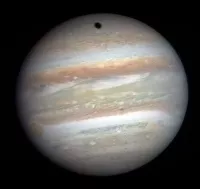
Jupiter is the fifth and largest planet from the Sun...
PlayStation is a video game brand by Sony Interactive Entertainment...
Xbox is a video gaming brand owned by Microsoft Gaming...
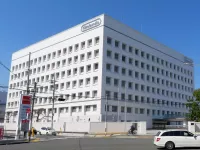
Nintendo is a Japanese multinational video game company based in...
McDonald's is an American multinational fast food chain As of...
The Nintendo Switch is a video game console developed by...
Trending
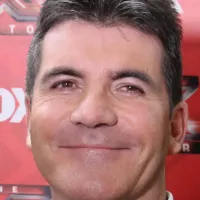
Simon Cowell is a prominent English television personality and businessman recognized for his role as a judge on various talent...
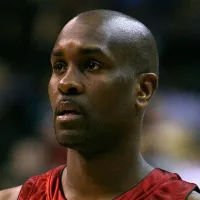
7 months ago Gary Payton Reflects on Jordan Matchup and Hypothetical Stats in Today's NBA
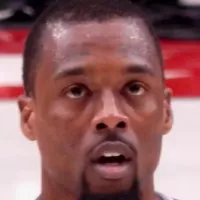
11 days ago Spurs Defeat Nuggets in Thrilling Game, Mavericks Face Nuggets
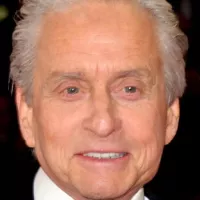
22 days ago Michael Douglas and Catherine Zeta-Jones Celebrate 25 Years of Marriage with Throwbacks
Luke Kornet is an American professional basketball player currently playing for the San Antonio Spurs in the NBA He's a...
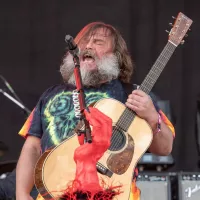
6 months ago Jack Black's Minecraft Movie Sets Premiere on HBO Max, June 20, 2025
Popular

Candace Owens is an American conservative political commentator and author...

Ilhan Omar is an American politician currently serving as the...

XXXTentacion born Jahseh Dwayne Ricardo Onfroy was a controversial yet...

Tom Cotton is an American politician and Army veteran currently...
The Kennedy Center Honors are annual awards recognizing individuals and...

Kelsey Grammer is an accomplished American actor producer and singer...
